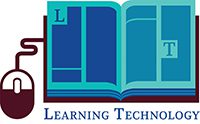In a learning leader’s ideal world, the most purposeful and efficient learning technology would be easy to access, reasonably priced, and facilitate workforce development in a way that’s best for the organization. Should technology malfunction or no longer serve its purpose, it would be seamlessly replaced with the help of an honest, easy-to-work-with vendor. Sounds nice, doesn’t it?
 Fortunately, this world doesn’t only exist in wishful thinkers’ minds. CLOs and learning leaders who have strong relationships with learning technology vendors know, when substantial learning technology investments are at the center of the conversation, honest and thorough discussions are vital. CLOs and learning leaders must clearly state their learning and development goals in order to avoid investing in inadequate technology, but they must also be willing to listen to the information and advice that their vendor has to offer. In the process of purchasing learning technology from a vendor, learning leaders often forget to ask the most important questions.
Fortunately, this world doesn’t only exist in wishful thinkers’ minds. CLOs and learning leaders who have strong relationships with learning technology vendors know, when substantial learning technology investments are at the center of the conversation, honest and thorough discussions are vital. CLOs and learning leaders must clearly state their learning and development goals in order to avoid investing in inadequate technology, but they must also be willing to listen to the information and advice that their vendor has to offer. In the process of purchasing learning technology from a vendor, learning leaders often forget to ask the most important questions.
In this Chief Learning Officer Special Report on learning technology, Niko Drakoulis of SurePeople; Don Hernandez of D2L; and Kieran King of Skillsoft discussed via email how learning leaders can communicate with vendors to ensure they get the products and services their organizations really need without wasting time, money and resources.
 Niko Drakoulis, founder and CEO, SurePeople
Niko Drakoulis, founder and CEO, SurePeople
AnnMarie Kuzel: How far in advance should the CLO start communicating with the vendor?
Niko Drakoulis: If it’s a large effort with multiple stakeholders and design complexity, three months is ideal. With a targeted project that has very clear parameters and leverages a vendor’s core competency, four to eight weeks should suffice. There is a direct correlation between the level of customization required and runway to accomplish the task.
Kuzel: What does that conversation look like? What sort of information is vital to communicate in order to ensure that CLO and vendor work together efficiently?
Drakoulis: The CLO has to be as clear as possible about a few key items:
- The business imperative/need — what problem are we solving together? The hardest thing is when, as a vendor, you are chasing solutions in search of problems. A good vendor should not be transactional or provide a solution that isn’t perceived as meeting the need.
- What success looks like — a clear “vision statement” about the desired outcomes for the organization is important so that a shared image of success and how the project will be measured is communicated and achieved.
- Clarity on key stakeholders — these are folks who can influence, block or drive the effort forward.
- Budget parameters — this is directly linked to understanding the business need, vision and scope. If a vendor is a true partner, this should be an open dialogue. Transparent budget discussions define a strategic versus a transactional relationship.
A one-hour launch meeting to discuss the purpose, business objectives and metrics, desired outcomes of the effort, expectations, budgets, stakeholders and agreements for “how we will work together” are critical at the outset.
Kuzel: Once things get rolling, how often do the parties need to speak?
Drakoulis: Aside from the fact that a vendor partner should be available to a customer at any given moment, this is one of the items that gets worked out in the launch meeting. Executive sponsors may need to be informed monthly, whereas the project team needs to meet weekly or biweekly. It is always helpful to establish a weekly 30-minute continuous improvement conversation with the folks on the ground to troubleshoot, share insights and key learnings, build relationships and maintain a sense of discipline throughout the effort.
Kuzel: At what point in the project should they report progress?
Drakoulis: This usually gets agreed to in the launch meeting. However, best practice is usually at several key milestones, including the launch; midway through an implementation; about one month before the conclusion; and 30-60-90 days post-implementation.
Kuzel: How do course corrections work? If a CLO changes his mind about the product desired, how should CLO and vendor work to correct this as seamlessly as possible?
Drakoulis: As a vendor, you must approach your relationship with a collaborative attitude and realize that people are probably responding to exigencies or shifts in the business. A change, depending on how big, should simply be a conscious conversation so that new expectations and needs can be scoped out, agreed upon, and responded to. The “shockers” happen when, as a provider, you are in a transactional relationship with your customer, not tightly aligned to the business need, or missing a major set of stakeholders.
 Don Hernandez, vice president of enterprise sales, D2L
Don Hernandez, vice president of enterprise sales, D2L
AnnMarie Kuzel: How far in advance should the CLO start communicating with the vendor?
Don Hernandez: Open the lines of communication as early as possible. The CLO should contact vendors after the problem definition phase of an initiative but before the solution definition phase, allowing vendors to offer valuable insight based on other customer experiences.
Kuzel: What does that conversation look like? What sort of information is vital to communicate in order to ensure that CLO and vendor work together efficiently?
Hernandez: It’s important to share your over-arching vision for your business and the metrics that matter most to your organization. Let your vendors know what your strategic goals are and what success looks like. Share your challenges. You have probably learned from your organization’s past mistakes, and sharing what you’ve learned is critical to help vendors to help you. It’s also important to ask vendors what their strategic goals are, and the vision for their company, products and services.
Kuzel: Once things get rolling, how often do the parties need to speak?
Hernandez: Before a contract is signed, a detailed implementation should be reviewed and agreed to. Once the contract is signed, it’s important to establish regular touchpoints across the stages of the project and at various levels to ensure open communication for an effective partnership:
During implementation:
- The project team involved in the implementation will need weekly check-ins to ensure the project stays on track and that both client and vendor are aligned. If timelines are particularly tight, check-ins may need to be daily at some points.
- The leadership team from the vendor and client should also establish check-ins during the implementation — this could be bi-weekly or monthly.
Ongoing:
- Once the implementation is complete, the program manager from both client and vendor should establish a cadence for meetings, typically either weekly or monthly. The CLO needs to clearly understand how clients transition in each vendor organization, with clearly documented handover protocols an absolute minimum.
- On a quarterly basis, the program managers and leadership from both sides, including executive sponsors, should meet to discuss the program’s achievement against success criteria, organizational updates, and next steps.
Kuzel: At what point in the project should they report progress?
Hernandez: The initial implementation plan should have a communication process that is utilized over the span of the engagement. The main project team should provide regular communication; other stakeholders may require less.
Kuzel: How do course corrections work? If a CLO changes his mind about the product desired, how should CLO and vendor work to correct this as seamlessly as possible?
Hernandez: Vendors understand that business objectives, strategies and markets change. CLOs should be communicating any changes to their requirements as early as possible and identifying any new showstoppers, while being realistic about timelines and efforts involved in meeting custom requests. Vendors can help these conversations by providing insight into product strategy, offering services to help bridge feature gaps, or considering integrations or partnerships to best meet the needs for the organization.
 Kieran King, vice president, global customer insight, Skillsoft
Kieran King, vice president, global customer insight, Skillsoft
AnnMarie Kuzel: How far in advance should the CLO start communicating with the vendor?
Kieran King: CLOs should not predetermine a particular solution and then start shopping. Instead, they should be clear about the desired result to be achieved. From there, engage leading suppliers early in the thinking. The best suppliers will teach CLO’s new insights about how to address their desired business outcomes, so allocate time for that discovery process.
Kuzel: What does that conversation look like? What sort of information is vital in order to ensure that a CLO and vendor are working together as efficiently as possible?
King: I would suggest three categories of discussion:
- Desired objectives:
- Specific business outcomes you seek to impact.
- Target populations that relate to those business outcomes.
- Business stakeholders and target audiences.
- Knowledge, skill or capabilities the target population needs to demonstrate.
- Timeframe when results need to be attained.
- Current state:
- Methods, if any, used today to address these capabilities.
- Rationale for making a change from the existing approach.
- Current learner time-to-capability.
- Total cost of ownership for the current solution.
- An estimate of the target audience participating in the current solution.
- Managing expectations:
- The degree to which learning is expected to influence the outcome.
- Business measures that should be positively affected.
- Suggestions to evaluate the new solution’s impact.
- Frequency for progress updates and how that dovetails with business cycles.
Kuzel: Once things get rolling, how often do the parties need to speak?
King: For a large-scale project the vendor will often assign a resource to project manage this stage of the partnership in order to look after all the moving parts, ensure deliverables are on track, and facilitate fluid communication to the project team. Smaller-scale and non-custom projects require less communication frequency, but even in these instances the vendor should work through a predictable success plan, and report when milestones have been attained or delays hamper execution.
Once onboarding is complete and the project is fully implemented, communication is still key because a CLO’s desired outcomes and a vendor’s capabilities are continually evolving.
Kuzel: At what point in the project should they report progress?
King: Progress reporting best practice is comprised of four dimensions:
- On-demand — self-service reports should be available from the vendor to gauge basic metrics regarding learning technology solutions adoption.
- Bi-weekly or monthly — operational topics are discussed routinely to ensure that deployment aspects are properly managed and optimized for greatest efficiency.
- Quarterly — at 90-day intervals, there should be a touch-point to ensure that targets set for the desired outcomes are on track and any deviations can be remediated.
- Annually — the CLO and vendor representatives should reflect on strategic changes taking place, set goals based on that contemporary understanding, and benchmark the partnership’s performance against best-in-class.
AnnMarie Kuzel is a former Chief Learning Officer editorial intern. Comment below or email editor@clomedia.com.















